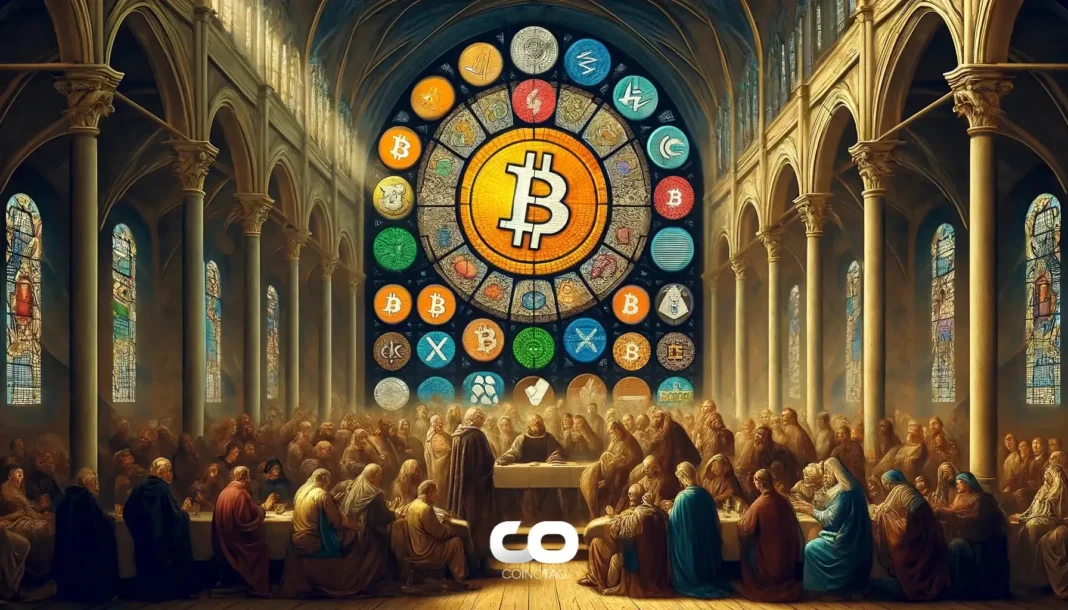| COINOTAG recommends • Exchange signup |
| 💹 Trade with pro tools |
| Fast execution, robust charts, clean risk controls. |
| 👉 Open account → |
| COINOTAG recommends • Exchange signup |
| 🚀 Smooth orders, clear control |
| Advanced order types and market depth in one view. |
| 👉 Create account → |
| COINOTAG recommends • Exchange signup |
| 📈 Clarity in volatile markets |
| Plan entries & exits, manage positions with discipline. |
| 👉 Sign up → |
| COINOTAG recommends • Exchange signup |
| ⚡ Speed, depth, reliability |
| Execute confidently when timing matters. |
| 👉 Open account → |
| COINOTAG recommends • Exchange signup |
| 🧭 A focused workflow for traders |
| Alerts, watchlists, and a repeatable process. |
| 👉 Get started → |
| COINOTAG recommends • Exchange signup |
| ✅ Data‑driven decisions |
| Focus on process—not noise. |
| 👉 Sign up → |
Bukele says he buys 1 BTC per day, but the IMF reports no net increase in government-owned Bitcoin; blockchain transfers into disclosed wallets continue, likely reflecting internal reallocation or prior purchases rather than fresh open‑market buys.
-
Bukele claims daily purchases of 1 BTC into government wallets
-
IMF states total government-owned BTC has not increased since the 2024 agreement
-
Blockchain data shows daily deposits into El Salvador–linked wallets; timing and origin of funds remain ambiguous
Meta description: Bukele buys 1 BTC per day claim vs IMF denial—investigate blockchain transfers, government statements, and what the data actually shows. Read analysis now.
| COINOTAG recommends • Professional traders group |
| 💎 Join a professional trading community |
| Work with senior traders, research‑backed setups, and risk‑first frameworks. |
| 👉 Join the group → |
| COINOTAG recommends • Professional traders group |
| 📊 Transparent performance, real process |
| Spot strategies with documented months of triple‑digit runs during strong trends; futures plans use defined R:R and sizing. |
| 👉 Get access → |
| COINOTAG recommends • Professional traders group |
| 🧭 Research → Plan → Execute |
| Daily levels, watchlists, and post‑trade reviews to build consistency. |
| 👉 Join now → |
| COINOTAG recommends • Professional traders group |
| 🛡️ Risk comes first |
| Sizing methods, invalidation rules, and R‑multiples baked into every plan. |
| 👉 Start today → |
| COINOTAG recommends • Professional traders group |
| 🧠 Learn the “why” behind each trade |
| Live breakdowns, playbooks, and framework‑first education. |
| 👉 Join the group → |
| COINOTAG recommends • Professional traders group |
| 🚀 Insider • APEX • INNER CIRCLE |
| Choose the depth you need—tools, coaching, and member rooms. |
| 👉 Explore tiers → |
By COINOTAG — Published: 2025-09-12 • Updated: 2025-09-12
What is the true status of Nayib Bukele’s “1 BTC per day” claim?
Bukele buys 1 BTC per day is a public claim from El Salvador’s president that the government is adding one Bitcoin to its reserves each day. Blockchain transfers into government‑labelled wallets occur daily, but the IMF says total government‑owned BTC has not increased, suggesting transfers may reflect internal reallocations or previously acquired coins.
| COINOTAG recommends • Exchange signup |
| 📈 Clear interface, precise orders |
| Sharp entries & exits with actionable alerts. |
| 👉 Create free account → |
| COINOTAG recommends • Exchange signup |
| 🧠 Smarter tools. Better decisions. |
| Depth analytics and risk features in one view. |
| 👉 Sign up → |
| COINOTAG recommends • Exchange signup |
| 🎯 Take control of entries & exits |
| Set alerts, define stops, execute consistently. |
| 👉 Open account → |
| COINOTAG recommends • Exchange signup |
| 🛠️ From idea to execution |
| Turn setups into plans with practical order types. |
| 👉 Join now → |
| COINOTAG recommends • Exchange signup |
| 📋 Trade your plan |
| Watchlists and routing that support focus. |
| 👉 Get started → |
| COINOTAG recommends • Exchange signup |
| 📊 Precision without the noise |
| Data‑first workflows for active traders. |
| 👉 Sign up → |
How does the IMF conclude there has been no net increase?
The IMF states the apparent increase in the Bitcoin Reserve Fund corresponds to movements across government wallets, not fresh net purchases. This assessment came as part of El Salvador’s development grant discussions and a 2024 agreement that required scaling back certain Bitcoin operations.
Comparison: Bukele’s Announcements vs IMF Findings
| Claim |
Evidence |
Interpretation |
| Bukele: 1 BTC/day purchases and periodic larger buys |
President’s tweets and government wallet deposits reported on-chain |
Public announcements align with wallet inflows but not proof of open‑market purchases |
| IMF: No increase in government-owned Bitcoin |
IMF communications citing internal wallet movements |
Suggests reclassification or transfers of existing holdings rather than new buys |
| Blockchain analytics |
Arkham, Bubblemaps tracking daily deposits from exchanges and other addresses |
Shows deposits but cannot prove purchase time or exchange ledger details |
Why can blockchain data both support and fail to prove fresh purchases?
Public blockchain ledgers show wallet balances and transaction sources, but they do not reveal when a coin was originally acquired or whether an exchange moved existing custodial holdings. If government wallets receive coins routed from exchanges, that inflow might reflect transfers of previously purchased or tax‑collected BTC.
| COINOTAG recommends • Traders club |
| ⚡ Futures with discipline |
| Defined R:R, pre‑set invalidation, execution checklists. |
| 👉 Join the club → |
| COINOTAG recommends • Traders club |
| 🎯 Spot strategies that compound |
| Momentum & accumulation frameworks managed with clear risk. |
| 👉 Get access → |
| COINOTAG recommends • Traders club |
| 🏛️ APEX tier for serious traders |
| Deep dives, analyst Q&A, and accountability sprints. |
| 👉 Explore APEX → |
| COINOTAG recommends • Traders club |
| 📈 Real‑time market structure |
| Key levels, liquidity zones, and actionable context. |
| 👉 Join now → |
| COINOTAG recommends • Traders club |
| 🔔 Smart alerts, not noise |
| Context‑rich notifications tied to plans and risk—never hype. |
| 👉 Get access → |
| COINOTAG recommends • Traders club |
| 🤝 Peer review & coaching |
| Hands‑on feedback that sharpens execution and risk control. |
| 👉 Join the club → |
How have analysts and officials explained the discrepancy?
Risk analysts warn of possible “wash trades” or internal reallocation if purchases are not clearly documented with exchange ledgers. Crypto analytics firms (e.g., Arkham, Bubblemaps) say on‑chain data is transparent but insufficient to establish the timing of original purchases without exchange cooperation. The IMF communicated that total government holdings show no net increase.
“We can confirm that the total amount of government-owned Bitcoin has not increased and that the increase in the Bitcoin Reserve Fund corresponds to movements across government wallets,” IMF Communications Officer Meera Louis said.
Frequently Asked Questions
Is El Salvador actually buying 1 BTC every day?
Publicly disclosed government wallets show daily deposits consistent with roughly 1 BTC per day. However, the IMF reports no net increase in government-owned BTC, indicating those deposits could be internal transfers or coins previously acquired but only recently moved into transparent wallets.
How can I verify if BTC deposits are fresh purchases?
Verify on-chain inflows to government wallets and cross-check timestamps. Definitive proof requires exchange ledger data showing purchase timestamps—data only the exchange can provide. Public analytics can flag exchange-originated deposits but not the original acquisition date.
| COINOTAG recommends • Exchange signup |
| 📈 Clear control for futures |
| Sizing, stops, and scenario planning tools. |
| 👉 Open futures account → |
| COINOTAG recommends • Exchange signup |
| 🧩 Structure your futures trades |
| Define entries & exits with advanced orders. |
| 👉 Sign up → |
| COINOTAG recommends • Exchange signup |
| 🛡️ Control volatility |
| Automate alerts and manage positions with discipline. |
| 👉 Get started → |
| COINOTAG recommends • Exchange signup |
| ⚙️ Execution you can rely on |
| Fast routing and meaningful depth insights. |
| 👉 Create account → |
| COINOTAG recommends • Exchange signup |
| 📒 Plan. Execute. Review. |
| Frameworks for consistent decision‑making. |
| 👉 Join now → |
| COINOTAG recommends • Exchange signup |
| 🧩 Choose clarity over complexity |
| Actionable, pro‑grade tools—no fluff. |
| 👉 Open account → |
| COINOTAG recommends • Members‑only research |
| 📌 Curated setups, clearly explained |
| Entry, invalidation, targets, and R:R defined before execution. |
| 👉 Get access → |
| COINOTAG recommends • Members‑only research |
| 🧠 Data‑led decision making |
| Technical + flow + context synthesized into actionable plans. |
| 👉 Join now → |
| COINOTAG recommends • Members‑only research |
| 🧱 Consistency over hype |
| Repeatable rules, realistic expectations, and a calmer mindset. |
| 👉 Get access → |
| COINOTAG recommends • Members‑only research |
| 🕒 Patience is an edge |
| Wait for confirmation and manage risk with checklists. |
| 👉 Join now → |
| COINOTAG recommends • Members‑only research |
| 💼 Professional mentorship |
| Guidance from seasoned traders and structured feedback loops. |
| 👉 Get access → |
| COINOTAG recommends • Members‑only research |
| 🧮 Track • Review • Improve |
| Documented PnL tracking and post‑mortems to accelerate learning. |
| 👉 Join now → |
Key Takeaways
- On-chain deposits exist: Daily inflows into El Salvador government wallets support Bukele’s announcements in appearance.
- IMF reports no net increase: The IMF attributes reported increases to internal wallet movements, not new net purchases.
- Definitive proof requires exchange data: Exchange ledger records are needed to confirm whether deposits represent fresh open‑market buys.
Conclusion
Both claims contain verifiable elements: Bukele’s statements match visible wallet inflows, while the IMF’s assessment highlights that on‑chain transfers do not necessarily equal net new purchases. Independent verification hinges on exchange records and clearer government accounting. Readers should watch for transparent exchange disclosures or official ledger reconciliations for a conclusive answer.
| COINOTAG recommends • Members‑only research |
| 📌 Curated setups, clearly explained |
| Entry, invalidation, targets, and R:R defined before execution. |
| 👉 Get access → |
| COINOTAG recommends • Members‑only research |
| 🧠 Data‑led decision making |
| Technical + flow + context synthesized into actionable plans. |
| 👉 Join now → |
| COINOTAG recommends • Members‑only research |
| 🧱 Consistency over hype |
| Repeatable rules, realistic expectations, and a calmer mindset. |
| 👉 Get access → |
| COINOTAG recommends • Members‑only research |
| 🕒 Patience is an edge |
| Wait for confirmation and manage risk with checklists. |
| 👉 Join now → |
| COINOTAG recommends • Members‑only research |
| 💼 Professional mentorship |
| Guidance from seasoned traders and structured feedback loops. |
| 👉 Get access → |
| COINOTAG recommends • Members‑only research |
| 🧮 Track • Review • Improve |
| Documented PnL tracking and post‑mortems to accelerate learning. |
| 👉 Join now → |






